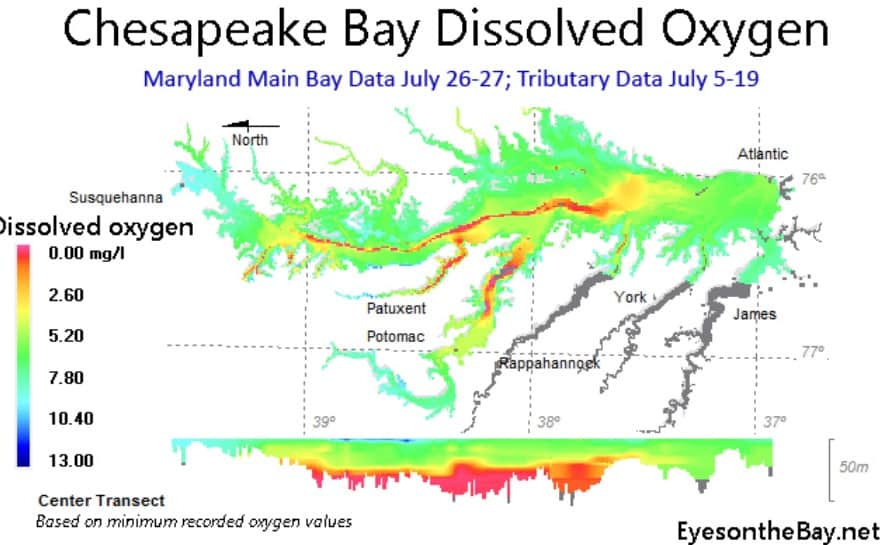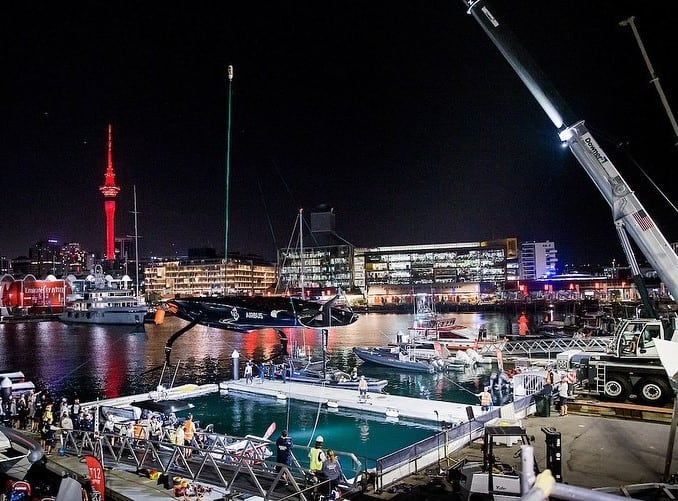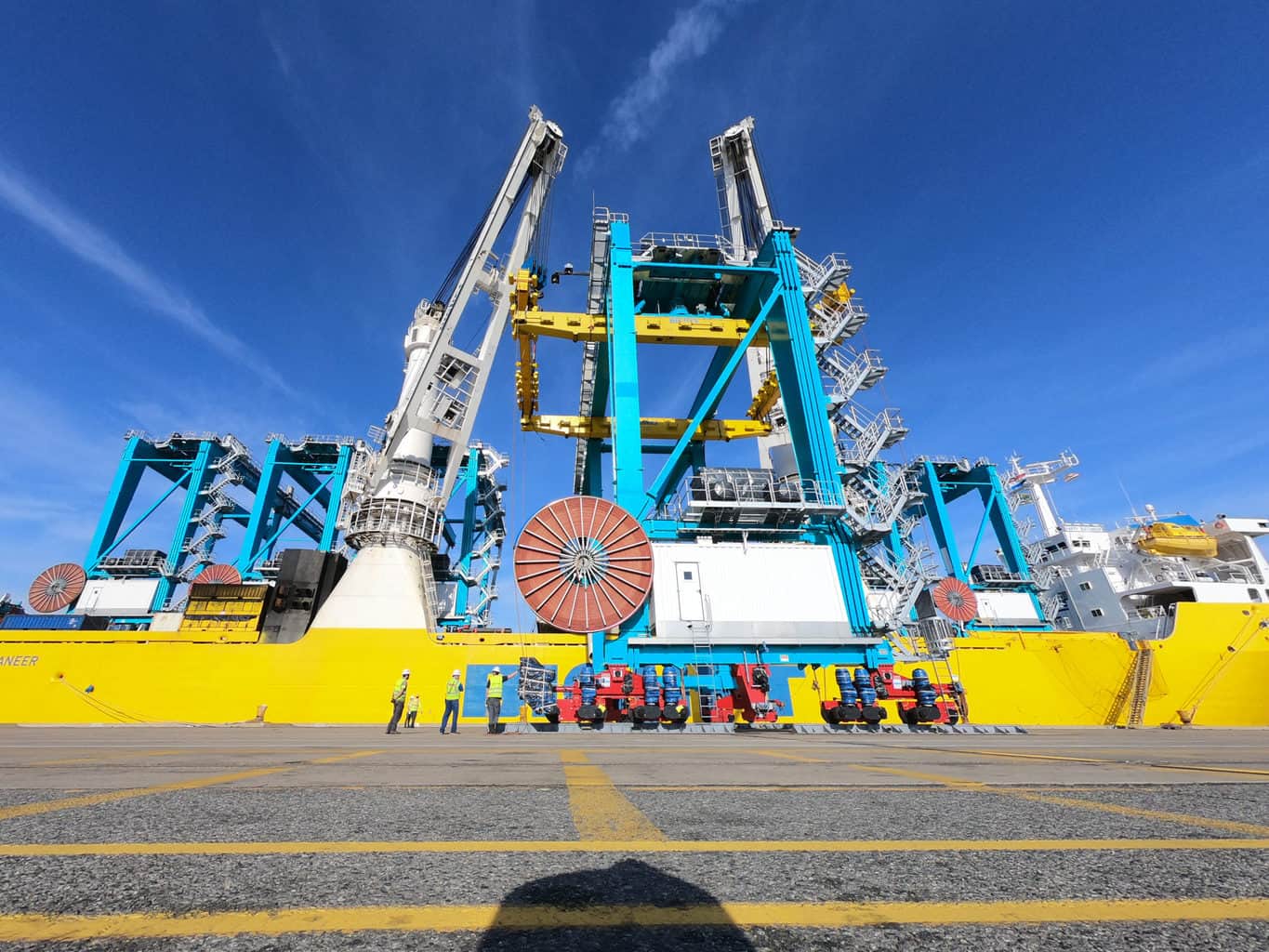Even as environmentalists worry about the impact of this summer’s storm runoff on the Bay, the heavy rain and winds actually appear to have helped one aspect of the Bay’s health.
In late July, the dissolved oxygen level in Maryland’s portion of the Bay was the best it’s ever been, according to Maryland Department of Natural Resoures (DNR). Recent water monitoring showed the hypoxic water volume– or area with less than two milligrams per liter of oxygen, was only 0.26 cubic miles. The oxygen-poor water was limited to the deepest parts of the Bay’s main channel: 65 feet or deeper.
The Susquehanna River saw historic water flow due to storms. Photo: NOAAMaryland and Virginia track hypoxia with two monitoring cruises per month during the summer. The agency attributes the reduced hypoxic zone to the massive rainfall in Maryland and Pennsylvania, which brought historic water flows through the watershed. As DNR explains it, “This wall of freshwater, accompanied by sustained winds of 20 knots before sampling, reduced stratification of the water column and mixed oxygen well into the system.”

DNR acknowledges that the impact of runoff from these summer storms has yet to be determined. It’s too soon to tell if extra nutrients may hurt aquatic life and underwater grasses, or contribute to algal blooms that could worsen the hypoxic volume. Because crabs, fish and oysters need oxygen in the water to survive, hypoxia could have a direct impact on wildlife.




